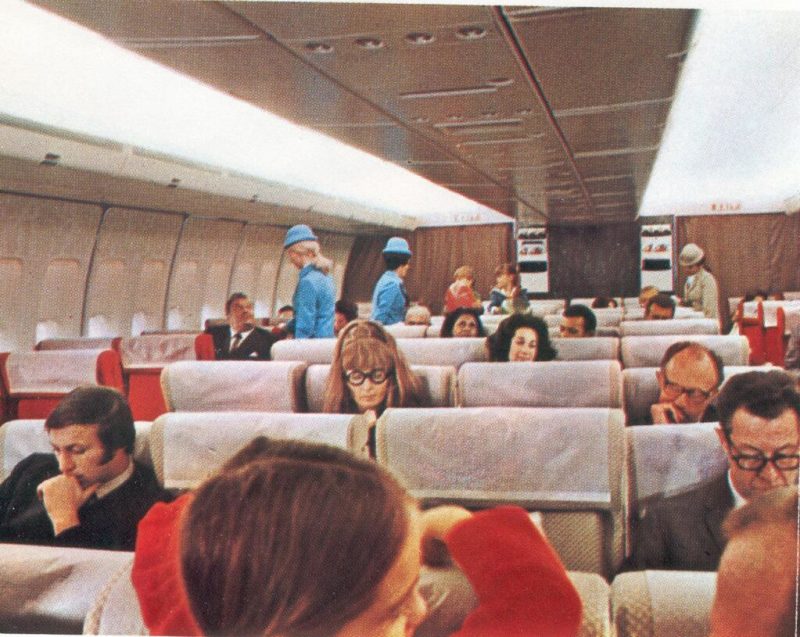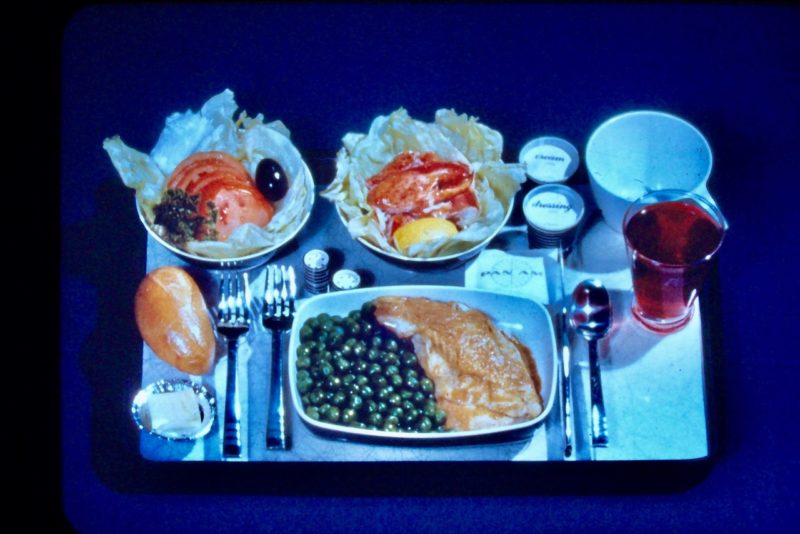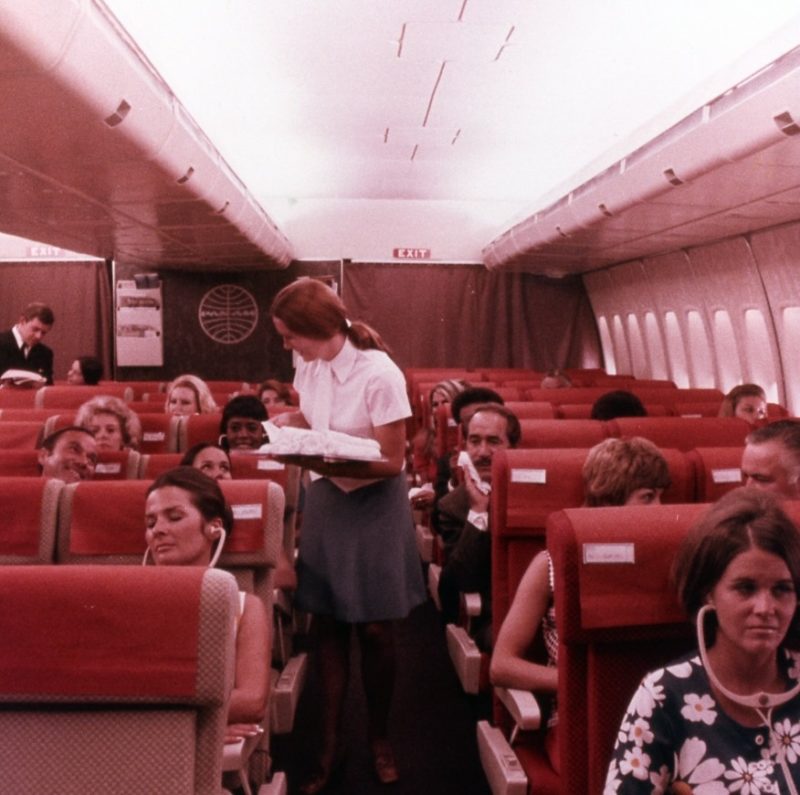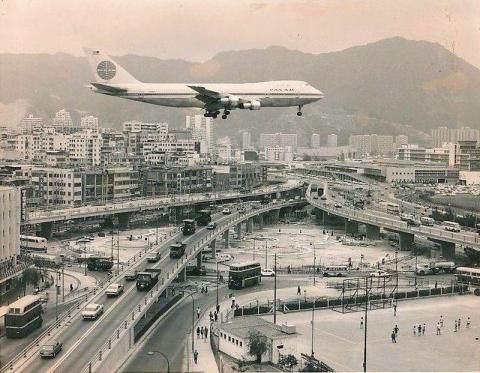Story shared by reader Melissa Frost from Gold Coast, Australia
"Are the children secured Madam?" The immaculate Pan Am hostess asked. "Yes, thank you" my mother replied, smiling nervously as she leaned over to check the seat belts of my siblings one more time.
Across the aisle, I looked down to check my own seat belt. On the tarmac outside the Pakistani Pan Am ground crew were moving away from the dust bloom surrounding the aircraft, toward the safety of the building that was Karachi International Airport.
"Dusty" I thought. The colour of Pakistan. "It’s dusty."
The engines began to roar and I looked around the cabin. My father was sitting next to me and my brother was on the aisle seat reading a comic. The main lights of the cabin dimmed, leaving us in an eerie void. The pristine Pan Am hostess' walked briskly down along the fuselage, checking seatbelts and closing overhead compartments. I looked out the window again and saw the ground crew pulling away the wheel chocks and loading last-minute suitcases into the hull of the aircraft. One of the Pakistani ground crew was beckoning the others to hurry up.
I was sad to be leaving Pakistan, as Pakistan was where I had my first crush. He was a sweet dark-haired American boy, he would piggy back me on his bike from an afternoon at the colony pool back to our bungalow on Sanobar. I didn’t even get to say Goodbye to him, as my father's announcement that we were leaving for Hong Kong immediately came out of the blue; it left us with no time but to point out our essential loves to the packers and board a Pakistan Airline flight for Karachi. We had been in Pakistan for only 18 months; contracted 50 miles north of Rawalpindi at Tarbela, where my father was building a huge dam across the mighty Indus River.
Pakistan in the 1970's was a fascinating place.
A country stoically carrying the tail end of the British Raj beast. A Raj where our bearer goose-stepped sahib, my father, as he disembarked the Landover after a day dam building. A country steeped in mysticism and culture, where the honourable respond to the call of the faithful, the adhan, resonating from mosques across the craggy terrain that is Northern Pakistan. The chant would float through the valley and down to the dam construction site; where rumour declares that Alexander the Great had crossed many a millennium ago with his immense army of stout, loyal Macedonians.
The aircraft started reversing from the terminal. The wings of the plane were moving effortlessly up and down as we taxied towards the runway. I was not worried about this as my Civil Engineering father once gave me an impromptu lesson in aviation physics, where he said the movement of the wings was essential in the flexibility of aeronautics. "It’s important Melissa" he had said.
We slowly rolled toward the runway feeling the weight of the aircraft as we turned to begin our ascent to the sky. The Captain asked the hostesses to take their seats and the aircraft manoeuvred into position for take-off. Moments later the 747 engines roared, as the aircraft sped down the runway. The power of the aircraft pushed us slightly back into our seats. "I just love flying" I thought. This moment of take-off, pounding down the runway; I just love it. The aircraft sped past Karachi International Airport, a two storey building with a dilapidated "Welcome to Karachi" sign. The plane's engines were throbbing, the fuselage was shaking and I heard the wheels clamp inside the belly of the beast as we gained lift and climbed into the heavens.

Flying around the world in the 70's was sumptuous. We wore our Sunday best. I had my favourite gold sandals on.
The cabins were spacious, with no overhead compartments running along the centre of the plane. Seats were large and comfortable. The aisles allowed two people to pass easily; during drinks and meal rounds it was easy to slip around the trolleys. The hostesses were also very obliging, my mother could rely on them to babysit my siblings whilst she napped, drank cocktails or touched up her makeup. The meals were delicious with real plates and real cutlery. We were given menus just after take-off, with a selection of meals available during the flight. My siblings always received the complimentary Children’s pack full of colouring books, colour pencils, books and other toys to keep them occupied. I however, was 11 and too grown up for the Children's Pack.

The seat belt sign went off. The flight to Hong Kong was going to be long according to my father with only one refuelling stop. There would be one movie on-board displayed on a central screen at the beginning of each section of the plane, after dinner and later into the flight. I undid my seatbelt and did a lap of the plane, finding another 11 year old sitting in the hostess’ jump seat at the back of the aircraft. I said "Hi" and she said "Bonjour". There were always plenty of European children flying with their parents in the 70's.
Flying was expensive and reserved for those who could afford it. Often companies that our fathers worked for paid the exorbitant airline ticket costs. We were allowed to roam the aircraft freely, without constraint. Moving from empty seat to empty seat. As capacity in 1970's was usually only around 75%.
The hostesses would let us all gather at the back of the plane in the last two rows and play. We would talk, read and play scrabble or snakes and ladders.
The hostesses often brought us drinks, chips and lollies. Our parents never came looking for us.
The flight continued, I bid my new French friend "adieu" and returned to my seat for dinner. Eating meals was akin to sitting in a fancy French restaurant; etiquette was a premium, even at 30,000 feet. I wiped my mouth with the cloth napkin provided. After the hostesses had cleared the cabin of the meal, the movie began and the lights of the cabin dimmed once again.

The hush of the engines drifted most off to sleep, except for my brother and me. It was the middle of the night and the flight was rounding the Indochinese peninsula. My mother asked the hostess if my brother and I could have an impromptu visit to the pilot’s cockpit. Unheard of in contemporary terms, but in the 60’s and 70’s this sort of thing was quite common. The hostess came back to my mother and said yes we could visit the cockpit. We followed her up the dark fuselage, past sleeping content passengers and entered the cockpit.
The pilots turned to greet us and were pleasant and welcoming. I looked left through the cockpit window and could see the moon reflecting off the distant coastline. The plane was hugging the western coast of Vietnam. The flashing instrument panel of the cockpit was in stark contrast to the dark low lying storm clouds miles below us.
Suddenly out of the distant dense cloud cover, along the Vietnamese coastline, came fireballs, exploding one, two and three
I had watched the Vietnam War news broadcasts on the BBC at the hotel in Karachi, so I had some idea of what was going on. Again came more fireballs one, two and three, which left me rattled. Every time one of the bombs exploded I knew that many lives had been lost; it was a powerful scene.
The pilots informed us that on their route between Karachi and Hong Kong this was a familiar sight. Pan Am could not fly over the Indochinese peninsula, but had to refuel in Dacca, East Pakistan and not Saigon. I was watching history and was rooted to the floor of the cockpit. I became acutely aware of my surroundings, vulnerable in an aeroplane at 35,000 feet. Not safely on the ground, playing in the sandpit out the back of our house in Sanobar.
After the pilots signed our logbooks we made our way back to our seats. Our flight was still hours out of Hong Kong and I spent the rest of the flight curled up in my seat, quietly reflecting on a Chinese proverb my mother often quoted "If people are of one heart, even the yellow earth can become gold". The scene has remained with me my entire life.
We arrived in Hong Kong six hours later and I could see the junks off Lantau Island, as the plane made its approach to Kai Tak airport. The plane was flying low and the pilot asked all passengers to buckle their seatbelts. I looked at my mother, who held my youngest sister, a baby, tightly to her chest.
All aircraft approaching Kai Tak airport in 1971 were guided by a red and white checkerboard, located on the side of a hill, which was the middle marker of their final approach. This visual sighting of the checkerboard told the pilots that they were two nautical miles from touchdown and needed to be below 1,000 feet. We suddenly made a right hand turn and I could feel the aircraft banking.

The Pan Am airliner was flying at 700 feet over Kowloon City. I felt I could reach out and touch the washing hanging on man-made clothes lines on the balconies below. The engines began to roar, how absolutely exciting I thought. I looked again at my mother; no, there was definitely nothing exciting about this. The large Pan Am aircraft hit Kai Tak with a bouncing force. The pilots applied the brakes as we hurled down the runway that protruded out into Hong Kong's famous fragrant harbour. The aircraft came to an eventual stop and we slowly taxied back to the terminal.
We had landed safely in Hong Kong and where headed onto my father's next project, High Island reservoir in Hong Kong's New Territories.
Story shared by reader Melissa Frost from Gold Coast, Australia




